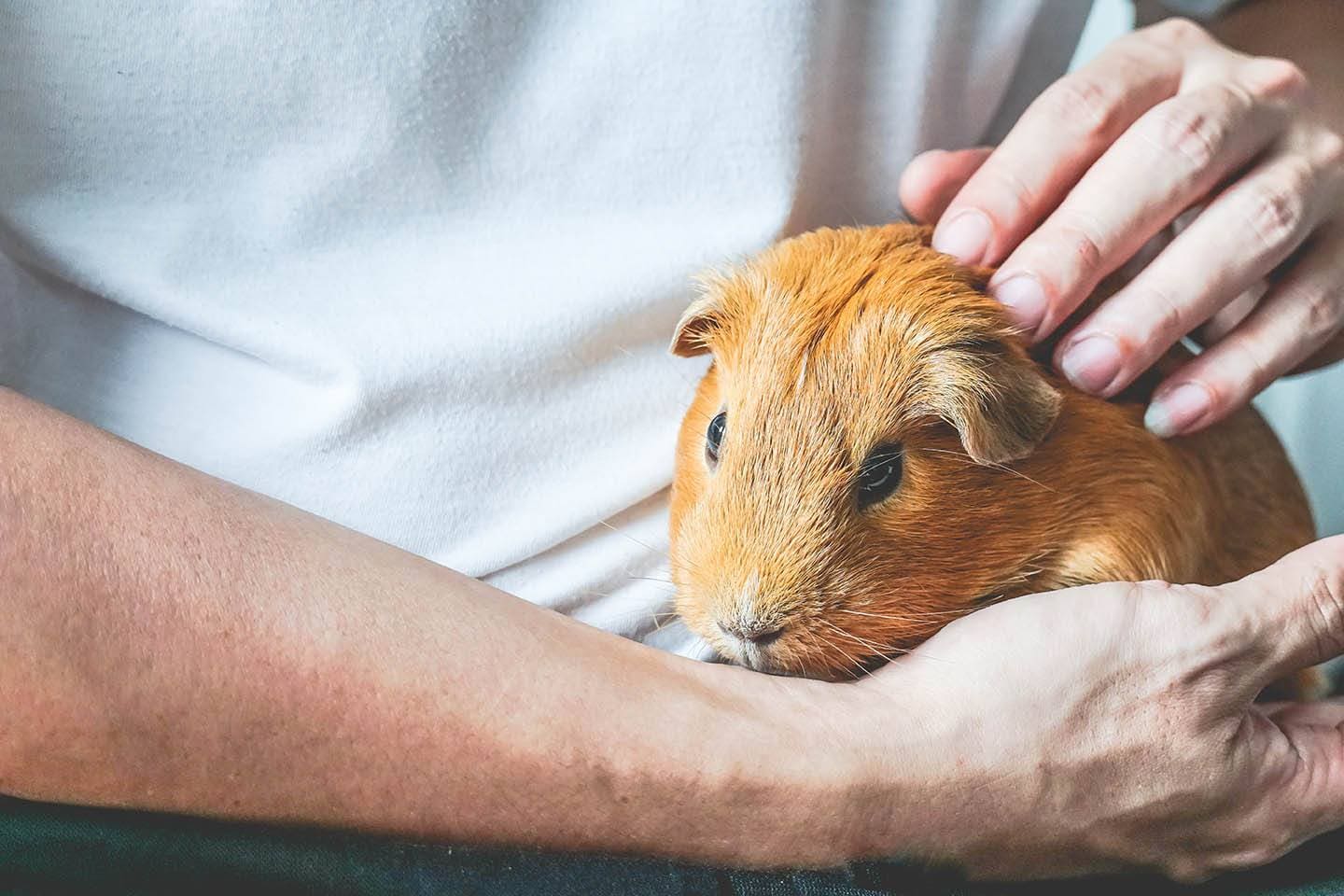
Adopting a new guinea pig is an exciting prospect. These tiny creatures are adorable and brimming with personality. Most new guinea pig owners are excited about holding and cuddling their new pet. However, this can be a bit more complicated than you may first consider. After all, guinea pigs are relatively small and can run surprisingly quickly.
It is essential to hold them correctly to avoid potential injuries or an escaped guinea pig. In this article, we’ll help you figure out how to hold your guinea pig and reduce the risk of injury.
The 8 Tips for Holding a Guinea Pig Correctly
1. Don’t Try to Hold Your Guinea Pig at First
While you may be excited right after adopting your guinea pig, you should give them some space for a few days after adoption. Many get stressed by all the new sounds and smells of being relocated. It is best to give them lots of space and interact with them very little for the first few days. Stress can be quite detrimental for guinea pigs, so you should aim to keep them as comfortable as possible.
2. Introduce Yourself
After a few days, you can begin to get your guinea pig acquainted with you. You shouldn’t necessarily take them out of their cage at this point. But you can begin putting your hand in their cage and potentially hand-feeding them. Petting is recommended once your pet seems to be comfortable in your presence.

3. Pick Up Your Guinea Pig
Generally speaking, most guinea pigs don’t struggle much when handled and are relatively easy to tame. You should approach your pet calmly, gently lift them from their hind legs, place a hand under their body, then lift and support them with your free hand and quickly bring them close to your body.
4. Hold Your Guinea Pig with Two Hands
After lifting the guinea pig out of the cage, hold them with two hands near your chest. This will make them feel most secure, and your chest will be under them to prevent potential jumps. Your second hand should go near their rump to make them feel more secure. This keeps the guinea pig more stable and prevents them from feeling like they’re falling.
You should have a solid grip on your pet, but don’t squeeze so hard that you hurt them. You don’t want them to jump out of your hands. You should sit down while holding your guinea pig to prevent high drops. Your movement may also scare them at first, which can cause them to attempt a jump.
Alternatively, you can place your pet on your lap, and gently place one hand on them to ensure they don’t run off, while using your free forearm as a barrier.

5. Provide Treats
It may help to provide your guinea pigs a few treats while you’re holding them. This makes them associate being held with good things, which will cause them to be a bit more accepting of the process. Be sure to feed only safe foods, and remember that treats should be used in moderation.
6. Return the Guinea Pig Safely to Their Cage
Once the holding session is done, you should firmly hold your guinea pig when you put them back in their cage. Some guinea pigs get a bit too excited to return and may jump when they see their cage. However, this can cause injuries and similar problems, so you need to hold them firmly.
Use both hands to place your pet gently back into the cage. You can turn the guinea pig around and put them in bottom-first to reduce the chance of jumps at the last second.

7. Keep the Session Short
You should keep the initial handling sessions short, especially at first. You don’t want to stress out your guinea pig, as it can discourage them from wanting to be held again. You should hold them frequently, however. Daily sessions will allow them to warm up to you over time.
8. Supervise Children
You should always supervise children when they are holding guinea pigs. Children don’t always know how to hold guinea pigs properly, which can cause serious injuries. Children should always sit while holding the guinea pig. They shouldn’t be allowed to carry the animal from room to room without your supervision.
Guinea pigs may become stressed if children handle them with too much force, which, in turn, may result in your child being bitten by the guinea pig as they struggle to break free.
Conclusion
It’s important to make sure that you give your guinea pig time to become comfortable in their new environment before you try to hold them, and always make sure to handle them gently and safely when they are ready to be held. By following these steps, we hope you manage to successfully handle your guinea pig and form a long-lasting bond with them.
Looking for more guinea pig care guides? Try:
- How to Introduce Guinea Pigs to Each Other (Based On Proven Methods)
- Can Guinea Pigs Eat Popcorn? What You Need to Know!
Featured Image: The Escape of Malee, Shutterstock








